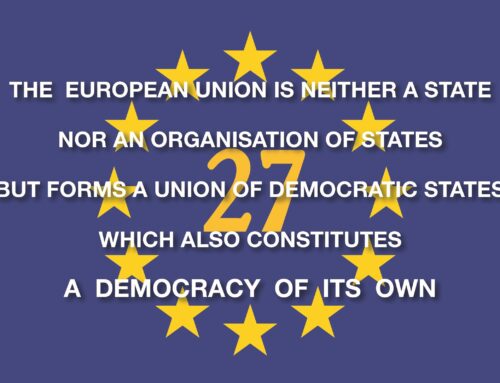 by Stefan Collignon
by Stefan Collignon
Professor of Political Economy at Scuola Superiore Sant’Anna, Pisa; Visiting Professor at the London School of Economics
This article first appeared in Italian on Euractiv.it (translated by Roberto Castaldi)
No other statesman has left a greater mark on Europe than Valery Giscard D’Estaing (1926 – 2020). For the French President, the key to the construction of Europe was the co-operation between France and Germany. Born in Koblenz (Germany) during the French occupation of the Rhineland, the Franco-German reconciliation was, as he once put it, “in his genetic code”. During World War II, he joined the French Resistance and participated in the Liberation of Paris. He had a deep understanding of Europe and Germany, which he described in these words: “The very special alchemy between the two peoples and their partly contradictory, partly complementary cultures and value sets marked by romanticism and classicism, pragmatism and rationalism, centralism and federalism, Étatism and social market economy, ensured that any orientation defined or accepted between France and Germany was situated at the confluence of different tendencies that existed across Europe”.
Giscard’s friendship with the German Chancellor Helmut Schmidt was as unique as it was personal. As Schmidt once said, it was an extraordinary Glücksfall. They had both met in the late 1950s as young parliamentarians in Jean Monnet’s Action Committee for the United States of Europe. They met again as Finance Ministers when the oil crisis shook the world. Europe had to preserve monetary stability after the breakdown of the Bretton Woods monetary system and Giscard d’Estaing put is brilliant mind to it. He had studied economics at École polytechnique and the École nationale d’administration, and during the long negotiating nights in Brussels, when the civil servants had to prepare official communiqués, Giscard would sit at his table and solve differential equation in order to stay awake!
Valery Giscard d’Estaing was elected President of France in 1974, in the same year when Helmut Schmidt became Chancellor of Germany. Few presidents have reformed French society more profoundly. Giscard broke with Gaullist stuffiness, reduced the age of majority from 21 to 18 and together with Simone Veil, an Auschwitz survivor whom he appointed health minister, he promoted the role of women, changed divorce laws, covered the cost of contraception by social security and legalised abortion. He pushed for the technological innovation of France, the development of the TGV high speed train network and promoted nuclear power to assert French independence. His Keynesian economic policies aimed at full employment, but this goal remained out of reach in the post-oil crisis environment.
Together with Helmut Schmidt, Giscard d’Estaing became the architect of the institutional construction of the European Union. As finance minister in the early 1970s, Giscard first created on the so-called “snake in the tunnel” exchange rate arrangement. It soon became clear that this was insufficient. In 1979 he secretly met with the German chancellor in Hamburg and the two men single-handedly invented the European monetary system. Giscard invented the ECU as a cornerstone for the new system and he clearly intended it to become the precursor to a European currency. Together with Schmidt, he promoted the democratic direct election of the European Parliament, set up the European Council between Heads of State and Governments and became one of the founders of the G7 meetings between leading industrial nations.
Even after his time as President, Valery Giscard d’Estaing continued his battles for Europe. Together with Helmut Schmidt, he founded the Association for the Monetary Union of Europe, which laid the ground for the monetary union long before their successors saw the need. From 1989 to 1993, Giscard served as a member of the European Parliament. As President of the Convention on the Future of Europe, from 2001 to 2004 and assisted by his two deputies Giuliano Amato and Jean-Luc Dehaene, Giscard worked at the institutional reform of the new European Union that was emerging after the fall of the Berlin Wall. He proposed a federalist constitution, which was however defeated by a French referendum. Nevertheless, essential features of this constitution are now preserved in the Lisbon Treaty.
Until the end of his life, Valery Giscard d’Estaing remained a “dreamer of Europe”, as he said himself. At age 94, he called for a “budgetary and fiscal union” in response to Covid-19. He saw this last dream become reality, even though he himself fell victim to the pandemic.






